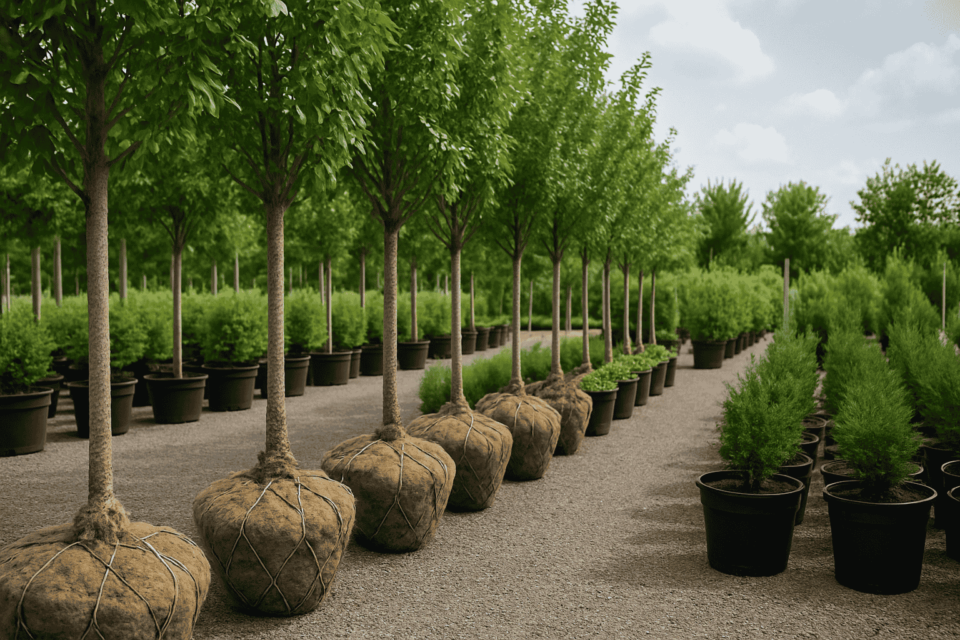Table of Contents
Introduction
Gardening is evolving—and not just in terms of trends and aesthetics. Today, more people are turning to sustainable native landscaping to create beautiful, functional, and environmentally responsible outdoor spaces. Whether you’re a homeowner, landscape designer, or urban planner, native plants are quickly becoming the go-to solution for modern landscapes.
But why is native landscaping being called the future of gardening? In this article, we’ll explore the rising popularity of this approach, its numerous environmental and practical benefits, and how it ties into broader efforts to combat climate change, conserve water, and support biodiversity.
What Is Native Landscaping?
Native landscaping involves using plants that are indigenous to a specific region. These are species that have naturally evolved in your area over thousands of years. Unlike exotic or non-native plants, native species are perfectly adapted to your local soil, rainfall, and climate conditions.
Native landscaping focuses on:
- Reducing resource inputs (water, fertilizer, pesticides)
- Enhancing wildlife habitat
- Restoring natural ecosystems
- Promoting long-term sustainability
Why Sustainability Matters in Landscaping
Traditional gardening and landscaping often rely heavily on:
- High water consumption
- Synthetic fertilizers and pesticides
- Frequent maintenance
- Non-native species that may become invasive
This approach places a strain on local ecosystems and contributes to environmental degradation. On the other hand, sustainable landscaping aims to minimize these negative impacts by working with nature rather than against it.
The Key Benefits of Native Landscaping
1. Water Conservation
Native plants require significantly less irrigation than exotic species. They’re adapted to thrive on local rainfall, making them perfect for drought-prone areas or regions with water restrictions.
Fun fact: Native landscaping can reduce outdoor water use by up to 60%!
2. Reduced Maintenance and Cost
Because native plants are already adapted to local conditions:
- They grow more easily
- Require less pruning and fertilizing
- Suffer fewer pest problems
This means lower long-term costs and fewer hours spent maintaining your landscape.
3. Natural Pest Resistance
Native species often co-evolve with local insects and wildlife. This makes them naturally resistant to many pests, reducing the need for chemical pesticides and helping maintain healthier ecosystems.
4. Supports Local Wildlife and Pollinators
Pollinators like bees, butterflies, and birds rely on native plants for food and shelter. By planting native species, you’re directly helping to preserve and strengthen your local biodiversity.
Why Native Landscaping Is the Future
A. Climate-Ready Landscapes
As climate change brings unpredictable weather, more extreme temperatures, and water scarcity, resilient gardens are essential. Native plants are naturally better equipped to survive in your local conditions—making them a smart, future-proof choice.
B. Eco-Conscious Consumers Are Driving the Trend
More homeowners and businesses are prioritizing environmental responsibility. Sustainable landscaping aligns with eco-conscious values, and many now seek:
- Native plant installations
- Organic gardening practices
- Low-impact lawn alternatives
This shift in demand is influencing garden centers, landscape designers, and even government policy.
C. Government and Community Incentives
Many cities and states now offer rebates or grants for converting lawns to native landscapes or installing water-wise gardens. Sustainable gardening is no longer just a trend—it’s becoming part of public policy.
Real-World Applications of Native Landscaping
- Residential Gardens: Homeowners replace lawns with native wildflowers, grasses, and shrubs.
- Commercial Properties: Businesses showcase environmental responsibility with native plant designs.
- Public Spaces: Parks, schools, and city medians use native plants to reduce maintenance and support local ecosystems.
- Restoration Projects: Native landscaping is used to restore wetlands, prairies, and forest margins.
Getting Started with Native Landscaping
Ready to embrace the future of gardening? Here’s how to start:
Step 1: Research Local Native Species
Visit your regional botanical garden, native plant society, or wholesale plant nursery to learn which plants are native to your region.
Step 2: Choose the Right Plants for Your Space
Consider factors like sun exposure, soil type, and water availability. Common native plants include:
- Coneflowers
- Milkweed
- Prairie grasses
- Blue-eyed grass
- Serviceberry trees
Step 3: Plan for Diversity
Include a variety of trees, shrubs, groundcovers, and perennials. This ensures year-round interest and provides habitat for different types of wildlife.
Step 4: Source Plants Responsibly
Partner with a reputable wholesale tree and shrub supplier that offers certified native species grown without harmful chemicals.
About Amplex and Their Native Plant Selection
About Amplex is helping drive the future of gardening by offering a wide selection of native trees and shrubs, ornamental grasses, and drought-tolerant perennials. Their plants are ideal for sustainable landscaping projects across residential, commercial, and public spaces.
Amplex emphasizes:
- High-quality nursery stock
- Regionally appropriate species
- Consistent availability
- Wholesale landscape plant delivery options
With native and adaptive varieties ready to ship, they support landscape professionals and property owners who want to build beautiful, sustainable spaces that last.
Conclusion
Sustainable native landscaping isn’t just a buzzword it’s a movement that’s transforming how we design and care for our outdoor environments. By choosing native plants, you’re doing more than saving water and money. You’re building ecosystems, supporting pollinators, and creating gardens that will thrive for generations.
Whether you’re planting a home garden, managing a corporate landscape, or leading a municipal project, native landscaping offers the best path forward. It’s not only the future of gardening it’s what the planet needs right now.

